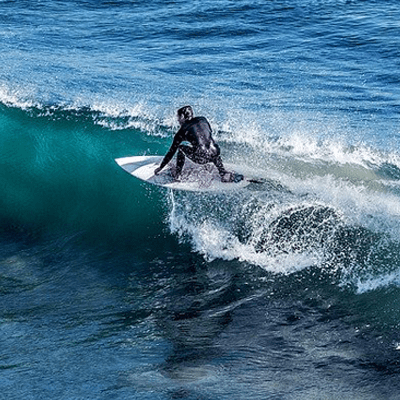Showcase your talents to the world.

Showcase your talents to the world.

Enter your email to receive a password reset link.

Surfing is marine pastime in which surfer rides on the face of a moving wave which usually carries the surfer towards the shore. Suitable waves for surfing are mainly found in the ocean. However standing waves found in lakes or rivers can also be used. However, these days artificial wave pools also help generating waves in still water or through boat shakes.
Stand-up surfing is where surfer ride a wave standing on a surfboard. And body boarding is when a surfer rides the wave on a bodyboard, either lying on their belly, drop knee (one foot and one knee on the board), or sometimes even standing up. Other types of surfing include knee boarding, surf matting (riding inflatable mats). Body surfing is where surfing is done without a board, using own body ride the wave. Three major subdivisions within stand-up surfing are stand-up paddling, long boarding and short boarding with several major differences including the board design and length, the riding style, and the kind of wave that is ridden.
There are four types of surfing waves: spilling waves, plunging waves, surging waves, and collapsing waves. Many historians and enthusiasts believe consider bodysurfing as the art of gliding over the waves using only the body as a planing surface.
Surfing is considered to have its origin in premodern Hawaii and Polynesia. Surfing helps in physical activity, better flexibility and presence of mind. The act of wave riding gave birth to several other boardsports like skateboarding, bodyboarding, windsurfing, kitesurfing, skimboarding, kneeboarding.
At HobbyLancer, browse through various adventure activities that you can do the next. Create a bucket list and we will provide all information you need. Share your experiences with us and how people love it.

We use cookies to ensure you get the best experience. By using our website you agree
to our Privacy Policy.